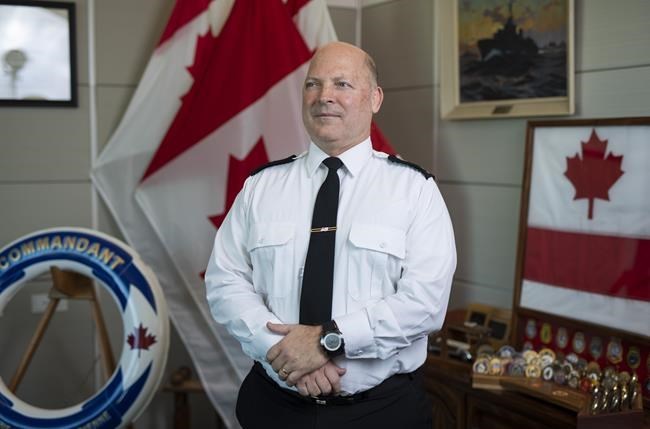OTTAWA — The commander of the Royal Canadian Navy is sounding the alarm over a shortage of sailors, saying he needs about 1,000 additional mariners to crew Canada's warships.
Vice-Admiral Craig Baines told The Canadian Press in an interview that the navy has been able to make do with its current personnel levels, but only because it retired three destroyers and two support ships that have yet to be replaced.
“We decommissioned five ships over the last seven or eight years, that adds up to just 1,000 people,” he said. “So we've been able to somewhat mitigate the stress of being 1,000 people short.”
Yet the navy has already put one new Arctic offshore patrol vessel into service as part of the federal government’s multibillion-dollar effort to replace nearly the entirety of Canada’s aging coast guard and naval fleets.
And with more vessels slated to arrive in the coming years, Baines said the clock is ticking on shoring up the navy’s ranks and getting those new sailors trained and ready to serve before the ships arrive.
“As we start to introduce the new (ships), we know that we need to solve that problem,” he said.
The navy isn't the only part of the Canadian Armed Forces facing a shortage of personnel, with overall recruitment having fallen dramatically during the COVID-19 pandemic and many training schools closed or working at reduced rates.
Canadian Forces' officials said earlier this year that they were short about 10,000 regular force and reserve members, which represents about 10 per cent of the military's total strength.
That shortfall has come despite an increase in pressures as the military has been called upon to help with numerous natural disasters as well as COVID-19 in Canada, while continuing to conduct operations around the world.
The navy has deployed ships over the past year to the Asia-Pacific region, Europe and the Caribbean, while the new Arctic patrol ship circumnavigated North America, travelling through both the Northwest Passage and Panama Canal.
Yet the navy has faced a particularly difficult time attracting new sailors, as have the Canadian Coast Guard and Canadian marine industry, as older sailors leave faster than they can be replaced and new technology sparks shortages of certain skills.
Baines is actually the latest in a growing line of Royal Canadian Navy commanders to raise concerns about a sailor shortage. Two years ago, before the pandemic, then-navy commander Art McDonald told The Canadian Press the force needed 850 more bodies.
Even though the warships under construction are almost all behind schedule, meaning the navy has some time, that trend does not inspire confidence.
And while replacements for the navy’s now retired destroyers and support ships won’t arrive for years, the government anticipates more of the Arctic patrol ships to roll off the assembly line this year and next — all of which will need to be crewed.
Baines hopes efforts to reduce the amount of time that potential recruits have to wait to get through the door will help, along with other initiatives being devised by the military’s human resources section and efforts to change the Armed Forces’ culture.
“We have to be viewed as a place that’s inclusive,” he said. “We need to reflect the diversity of Canada. And there is a lot of untapped potential that we could only get better at attracting as we make these changes.”
This report by The Canadian Press was first published Dec. 30, 2021.
Lee Berthiaume, The Canadian Press



